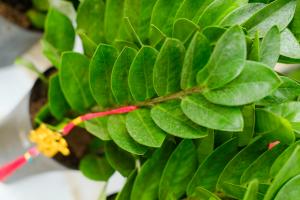How Far Apart to Plant Vegetables
Introduction
Planting vegetables in your garden can provide you with fresh and healthy produce all season long. However, one factor that is important to consider when planting vegetables is the spacing between plants. It is important to space plants appropriately to ensure healthy growth and maximum yield. In this article, we will discuss how far apart to plant vegetables.
Importance of Proper Spacing
Proper spacing is important for plants to grow and thrive. If plants are too close together, they can compete for nutrients, water, and sunlight. This can result in stunted growth, reduced yields, and even plant disease. On the other hand, if plants are too far apart, it can result in wasted garden space and reduced yields. Therefore, it is important to find the right balance when spacing your vegetable plants.
Plant Spacing Guidelines
The spacing needed for vegetable plants can vary depending on the specific plant and variety. Here are some general guidelines for commonly grown vegetables:
- Tomatoes: Space plants 18-24 inches apart.
- Peppers: Space plants 18-24 inches apart.
- Cucumbers: Space plants 36-48 inches apart.
- Squash: Space plants 24-36 inches apart, depending on the variety.
- Carrots: Space plants 2-4 inches apart.
- Lettuce: Space plants 6-12 inches apart.
- Beans: Space plants 2-6 inches apart, depending on the variety.
- Broccoli: Space plants 12-24 inches apart.
- Cauliflower: Space plants 18-24 inches apart.
Considerations
When spacing your vegetable plants, there are a few other factors to consider:
- Soil Quality: If your soil is poor, plants may need to be spaced farther apart to allow for adequate nutrient uptake.
- Sunlight: If your garden gets less than six hours of sunlight per day, plants may need to be spaced farther apart to ensure adequate growth.
- Watering: If you plan to water by hand, plants may need to be spaced farther apart to allow for easy access to each plant.
Conclusion
Proper spacing is key to a healthy and productive vegetable garden. By following the general guidelines for plant spacing and considering factors such as soil quality, sunlight, and watering, you can ensure that your vegetable plants have the space they need to thrive.

 how many times do yo...
how many times do yo... how many planted tre...
how many planted tre... how many pine trees ...
how many pine trees ... how many pecan trees...
how many pecan trees... how many plants comp...
how many plants comp... how many plants can ...
how many plants can ... how many plants and ...
how many plants and ... how many pepper plan...
how many pepper plan...

































